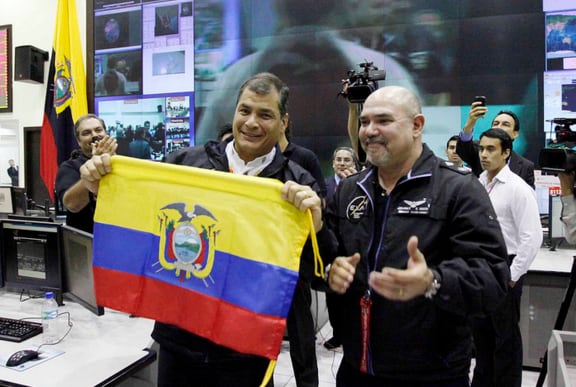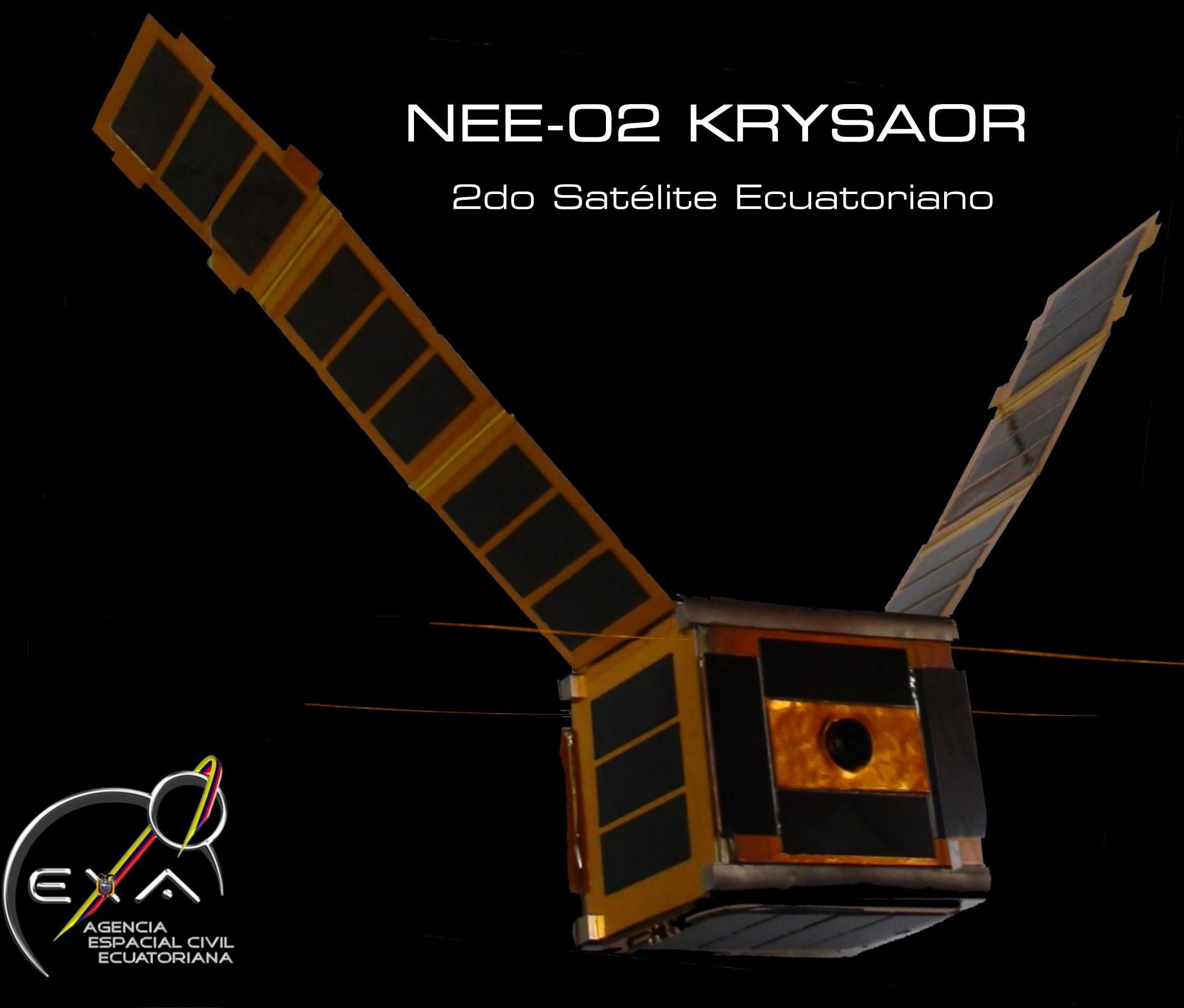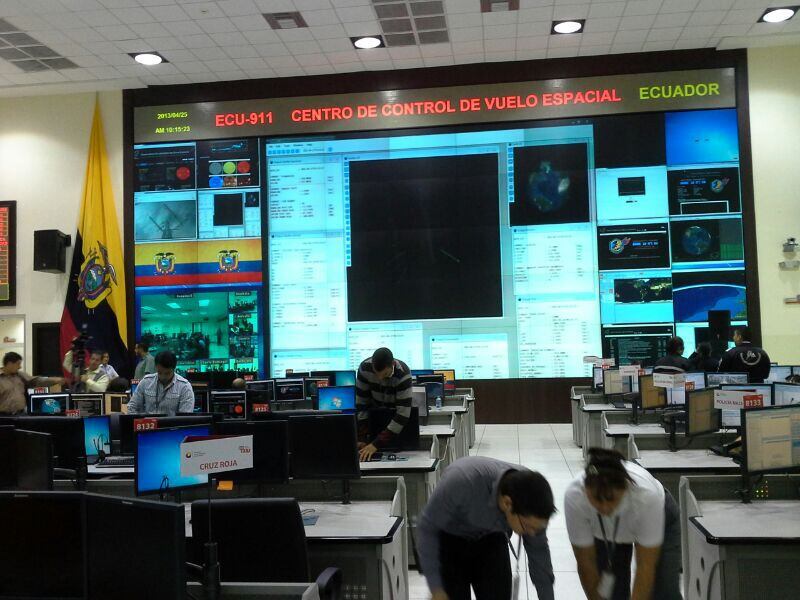“Welcome to the paradise of Pegasus, and welcome to the space of Ecuador“, with these words Ronnie is rareThe Ecuadorian astronaut announced on April 25, 2013 that the NEE-01 Pegaso satellite was in orbit. The satellite was developed by Ecuadorian Civil Space Agency (EXA) and received support from the government of the then President Rafael Correa, which paid $700,000 in certifications and tests for the Pegasus spacecraft — and later its twin — to reach space. A decade after this important event that will mark the beginning of Ecuador’s path in space, not much has been said about Pegasus which, according to the agency’s information, should return to Earth this year.
On May 16, 2013, Pegasus broadcast its first real-time images from space. He did this for seven days. However, one month after it was launched into orbit, the US Joint Space Operations Center informed EXA about it The Ecuadorian satellite will pass near the remains of a Soviet missile.
According to the agency, although the collision was not direct, Pegasus’ collision with Soviet space debris caused damage and caused the satellite to begin rotating uncontrollably. This caused its antenna to not be pointed correctly and stably towards the ground station, and although it was still working, its signal could not be decoded. In September 2013, The agency announced that it was unable to recover the satellite signal, and that it would therefore implement the insurance that covers itAccording to files Evie.

Pegasus It is a nanosatellite type ship, 1U cubesat model. Its dimensions are 10x10x75 cm. It has deployed solar panels that are cubic in shape and weigh 1.2 kilograms. This satellite carries a camera on board to obtain live images and videos from Earth’s orbit. The satellite was designed and built entirely in Ecuador without foreign assistance. Construction lasted for a year and was carried out by a team led by Ronnie Nader, Sidney Drewett, Manuel Origen, Hector Carreon And Ricardo Alo.
he launch The Ecuadorian satellite was manufactured from the Jiuquan Space Base China. with Pegasus They also took off Chinese satellite Gaofen-1 And the TURKSAT-3USAT nanosatellite to Türkiye And CubeBug-1 (Captain Beto) from Argentina.
The Korean government, which devoted much of its propaganda equipment, established a national television network to show the event. The former president was excited during the launch, as was Nader, EXA director, who confirmed: “A great nation does not buy technology, it creates it“Images of that moment are the embrace of two Boy Scouts, as described by journalist José María Cabrera in a profile he did on the astronaut in 2018. Both Nader and Correa were Boy Scouts during their childhood.
Just two months after being abandoned for Lost, on November 21, 2013, it was released EXA launched the second satellite NEE-02 KrysaorPegasus twins. Chrysor was launched from Dombarovsky Air Base in Orenburg Oblast, Russia.

On January 25, 2014, the civil space agency announced that the satellite Chrysor He managed to recover the signal from his twin. Pegasus then stopped being space junk and returned to transmitting to a ground station. By April 25 of the same year, the first Ecuadorian satellite completed its mission to remain in space for a year. but, Pegasus remains in orbit and is operational. It is estimated that it has completed about 15,000 orbits around the Earth and is expected to do so Re-entry in 2023. But no details have been announced about the latter. For this part, Chrysor also completed its mission by staying in space for a year and is scheduled to return in 2025.
The Ecuadorian Civil Space Agency was founded on November 1, 2007 by Rony Nader, who trained as an astronaut in Russia and who leads the agency in Ecuador. According to its description on Linkedn, EXA is an independent civilian organization responsible for managing and implementing the Ecuadorian civil space program, conducting research in planetary and space sciences and promoting the development of science in the country’s educational system. Moreover, the organization confirms that it “enjoys the support of the Ecuadorian state through… Ecuadorian Air Force With whom EXA maintains a close relationship, not only in order to work for the benefit of Ecuador, but also through mutual respect and friendship.
Although the Korean government supported EXA’s space missions, in 2018 it had backed its predecessor Lenin Moreno He ordered a solution Ecuadorian Institute AspasiaL(II). It was created in 2012 and its function was to systematically structure the Ecuadorian aerospace system composed of “satellites, manned aircraft, drones, payloads for Earth observation and telecommunications, and specialized sensors integrated with hardware that comes from research, development and monitoring operations.” Innovation”, as described in the 2014-2017 Corporate Management Plan. By order of Moreno, the independent external evaluation functions were transferred to Military Geographical Institute.

In 2016, Ronnie Nader told Technology Magazine IEEE Spectrum Ecuador has been benefiting from UV exposure data for Pegasus and Chrysor since this “now”. They are included in local weather reports. Local firefighters also benefit: they come to us for help identifying forest firesHe confirmed.
There is currently no public information about the cooperation between the government and the Ecuadorian Civil Space Agency. information He tried to contact Ronnie Nader to find out details about the return of both satellites, as well as whether EXA was receiving any support from the state, but as of press time there had been no response.
While Ecuador and its public and private bodies do not clarify the position of the state’s attempts to occupy a place in space; Both Pegasus and Chrysaor must return to Earth, but if they don’t, they can continue to orbit the planet until they stop functioning and become space junk. Space junk cost Ecuador $700,000.

:quality(85)/cloudfront-us-east-1.images.arcpublishing.com/infobae/CNDY4QJYIVGMRN23EOW3TFOQBE.jpg)



